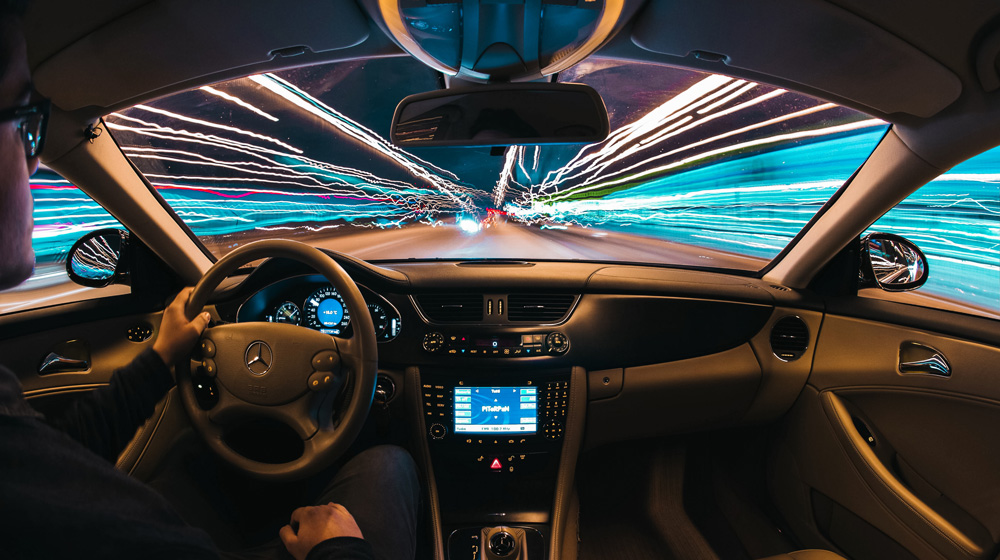Agreeing on how to collide

Autonomous vehicles (AV) are expected to improve road safety and avoid serious accidents significantly. But do the autonomous systems and humans understand each others reactions in a tense traffic situation? What happens if different manufacturers have their own collision avoidance systems? Researcher Masoumeh Parseh who works on developing algorithms for AV’s collision mitigation systems, knows the answers.
Soon autonomous cars will be part of our traffic system. Cars with no drivers will share the road with vehicles having people behind the wheel. Everyone seems to agree that autonomous vehicles (AV) will improve road safety and cause fewer accidents. With the help of sensors, they gather information about the surrounding environment, objects and other traffic participants. Based on this information, the system predicts the behavior of the other road users. If a threat is identified, it has to decide on an action plan which avoids or mitigates the threat. The algorithms for such systems are called collision avoidance, or mitigation algorithms.
Humans behind the algorithms
But even though you feel that autonomous cars are more competent than humans, it’s still humans programming the AV:s to what to do. Masoumeh Parseh is a researcher who has a hand in this.

“When an AVs’ system identifies a threat or a dangerous situation, its priority is to avoid a collision. But when that is unavoidable, the next step is to mitigate the consequences of a collision. In my research, I develop methods and algorithms that deal with situations where you can’t avoid a collision. We call these algorithms collision mitigation algorithms”, says Masoumeh.
Masoumeh has been working in the department of Machine design for five years, loving the emerging technologies, cars, and being able to model different phenomena. The research in autonomous vehicles has it all.
There are many challenges when designing this system. Masoumeh explains that a collision mitigation system contains many individual research fields; sensing the environment, analysis, decision-making and actuation - all come with their own challenges.
“For instance, the data gathered from sensors can be noisy and error-prone. Also, in adverse weather conditions, the perception system can be compromised, making it more challenging to determine the positions of obstacles, like vehicles, pedestrians etc.“
Decisions in an instance
Road conditions can also vary unexpectedly. If a safe path is generated for dry asphalt, but the road suddenly is wet or icy, the vehicle may not be able to follow the planned, safe, course. The environment of the AV is uncertain, for instance, the intended behavior of other road users is not known.
On top of this, a particular challenge for a collision mitigation system is decision-making in an instance.
“The vehicle usually has around 1-2 seconds to decide on a maneuver and then actuate that. Another challenge is that the upcoming motion of other vehicles is not deterministic, and decision-making is performed based on uncertain information”.
If self-driving vehicles act more rationally, what happens when the “smart” car meets a human driver in a dangerous situation? Will the human understand how the self-driving vehicle will act?
“According to an article that I read, since human drivers are not used to the behaviors of self-driving vehicles, they might drive up too close to them with higher speed which causes unsafe situations such as rear-end crash. The same article also shows that other types of accidents are less frequent because of the rule-following behavior of AVs. I don’t think we necessarily want the AV to behave like a human driver. Autonomous vehicles will be designed to have capabilities beyond an average human driver. However, I believe it is important that the manufacturers of such vehicles have common reaction or behaviors, especially for dangerous situations.”
Masoumeh says that it’s possible that even minor differences in the design of the algorithm trigger different behaviors from the AV. However, this is less of an issue when all vehicles on the road are autonomous and can communicate with each other or with the infrastructures.
Meeting foreign AV:s
But what will happen when I take my self-driving car for a holiday trip to southern Europe? Will my car speak the same language as the AV:s on my resort?
“In my work, I have based the algorithms on accident data. So, if one region or country have certain types of accidents in comparison to other regions, this would affect the AV’s decisions”, Masoumeh says.
“Different countries have their own driving styles and culture. Also, the infrastructure may differ, which might influence the regulations and policies in a traffic situation. If the drivers of conventional vehicles will face even more unexpected situations when AVs act differently from one region to another the authorities will have to address these issues - a common ground seems necessary.”
She says that manufactures must be able to convince policymakers regarding the safety of their products.
“There is always the question of liability issues. Who is responsible in case of accidents: the owner of the vehicle or the manufacturer? I guess the focus of insurance companies could shift from insuring car owners to manufacturers. But first, one must convince the general public to accept autonomous vehicles”.
Text: Anna Gullers
